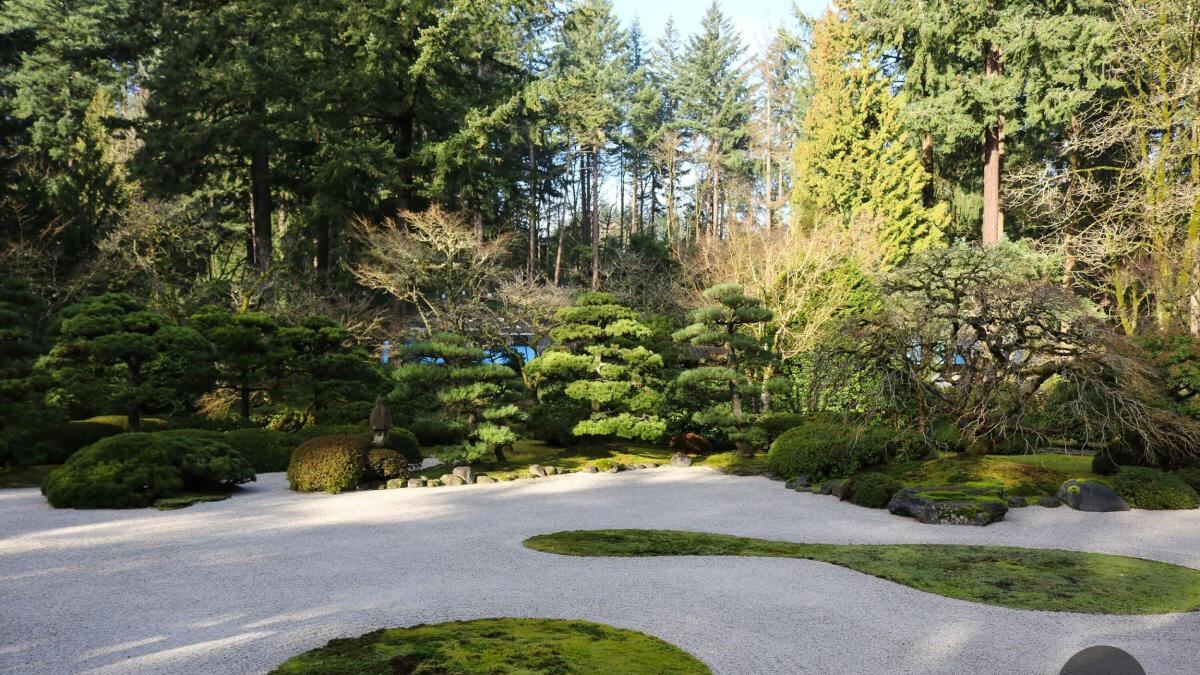Winter can hit hard: dark days, poor hiking, unpredictable Portland weather, the rush of the holidays, the stress of small talk with the relatives you see once a year, etc. If you need a chance to escape, you don't need to go far. Whether it's a chance to get away from that screen during a lunch break, to escape the buzz of the holidays, or to share a quiet moment with (or without) family and friends, Portland Japanese Garden is our urban oasis within city limits. Not many think to visit the garden in the wintertime, and with fewer tourists, you're sure to find a moment of peace. Last week, we visited the Garden and have put together some suggestions on how to best experience this local treasure right here in Portland.
Find your favorite garden
Portland Japanese Garden is home to eight different gardens, whether you prefer a stroll or a sit, there's likely something to fit your fancy. Japanese gardens are comprised of three parts: stone, water, and plants. However, each is a unique interpretation of the material, resulting in varying experiences. In the Natural Garden, weave down intersecting paths deep into the lushest section of the garden. Gaze quietly at the Sand and Stone Garden framed like a masterpiece in an art museum. Let your imagination wander through a traditional Japanese tea ceremony demonstration in the Tea Garden. Or take a walk through the Strolling Pond Garden and listen to the serene trickle of Heavenly Falls.


Contemplate in the Flat Garden
In front of the Pavilion Gallery is the Flat Garden—a work of art in itself. This is a garden designed for looking, not exploring. Japanese gardens are asymmetrical but balanced, and its simplicity makes room for the wandering mind. The Flat Garden features all four seasons: the Weeping Cherry for Spring, the raked stones for Summer, the Japanese Maple for Fall, and the Black Pine for Winter. Use this moment to ease onto a bench, contemplate the changing seasons, the pace of life, and maybe work out some New Year's resolutions.


Get lost in the foliage
Sometimes you're just too busy to take a drive out to the Gorge, the mountains, or the coast. You can still get a taste of nature in the West Hills of Portland. The Garden is home to a variety of trees, both Japanese foliage and familiar Northwest natives. If you gaze up you'll see the tall standing Doug Firs and Cedars. Closer to eye level, you'll find Black Pines and Japanese Maples. Black Pines are known for their cloud-like pattern of branches. In the winter, it's a particularly special sight—covered in a dusting of snow, the tree resembles soft clouds.


Warm-up with tea at Umami Cafe
It can get cold in the shade of the trees; luckily, you can warm up with a cup of tea at Umami Cafe. Choose from a variety of tea sets, with traditionally styled Japanese tea and small desserts. How does matcha with chocolate mochi sound? The cafe floats over the hillside, with glass walls looking out onto a forest of trees, so you can still enjoy the natural landscape in the warmth of the cafe. Pro tip: Make a reservation in advance, so as soon as you wrap up your exploring, you can warm up with tea and a light snack.


Immerse yourself in the Cultural Village
In 2017, the Garden unveiled their expansion project, including the Cultural Village, allowing visitors to discover the richness and wisdom of Japanese culture. Check the events calendar before your visit to catch a free cultural demonstration, such as the soft sounds of koto, a thirteen string plucked zither that has become one of the most prominent instruments in Japan. While we can all agree that Portland has one of the best selections of live music, this is one experience you might not get the chance to enjoy anywhere else. The delicate plucking will send you into the ultimate tranquility.


The Portland Japanese Garden is open from 10 a.m. – 4 p.m. Tuesday through Sunday, and Mondays from 12 p.m. – 4 p.m. Learn more about the garden at japanesegarden.org.

